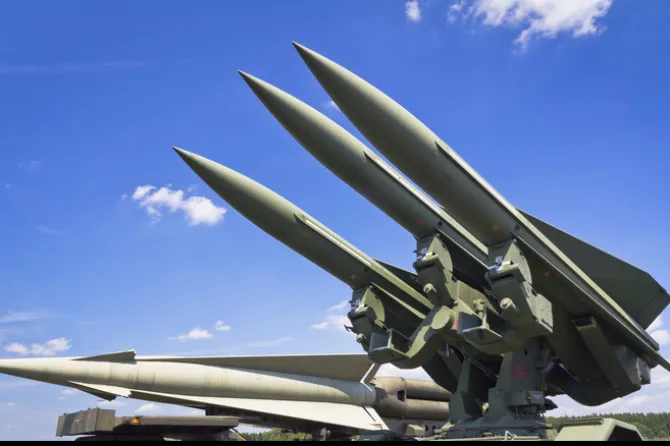
The ongoing war between Ukraine and Russia has drawn attention to various aspects and dimensions relating to its conduct and execution. Adaptation remains critical in wars as seen throughout history, and the current conflicts between Moscow and Kyiv and between Hamas and Israel are no different. Adaptation can come in tactical, operational, organisational, and technological forms. Here, we confine ourselves to the technological dimension of adaptation. Typically, the most sophisticated and advanced technologies get the most attention from experts and the lay public. However, the least or less advanced technologies do not draw the kind of attention that the most cutting-edge capabilities do. The two wars unfolding before our eyes—the Russia-Ukraine conflict and the Hamas-Israel conflict—are witnessing the use of technologies that are, in one case, fairly advanced and, in the other case, not so cutting edge. Yet both subsets of capabilities, whether rudimentary or advanced, have proved to be lethal and effective. Let us first consider the Russia-Ukraine conflict where Moscow has adapted to the capability advantage that Ukraine wielded in the form of the United States (US)-built and supplied High Mobility Artillery Rocket System (HIMARS). The very advanced HIMARS, which is a Multiple Rocket Launch System (MRLS), are known for their long-range precision striking power, transportability, mobility, and survivability.
The two wars unfolding before our eyes—the Russia-Ukraine conflict and the Hamas-Israel conflict—are witnessing the use of technologies that are, in one case, fairly advanced and, in the other case, not so cutting edge. Yet both subsets of capabilities, whether rudimentary or advanced, have proved to be lethal and effective.
Generally, against Russian targets located at great distances, the US-supplied Ukrainian HIMARS proved to be highly effective. As a result, during the final four months of 2022, Russian forces were incurring heavy losses, compelling them to retreat from the Kharkiv region in Northern Ukraine. Russia, in due course and from early January 2023 onwards, adapted by responding with the deployment and use of the IB75 Penicillin counter-artillery systems and Kamikaze Germanium-2 Unmanned Aerial Vehicles (UAVs)—the latter are essentially Iran-supplied Shahed-136 drones, which are inertially-guided loitering munitions that the Russians adapted to make them satellite-guided. Consequently, the lethality of these drones has increased significantly. The battle of Bakhmut, which was eventually won by the Russians, involved the use of an IB75 counter-artillery system and helped neutralise Ukraine’s capacity to detect and intercept fire from the IB75 Penicillin largely because it did not use radar, which would otherwise render it susceptible to detection and interception. The Penicillin is completely automated and uses thermoacoustic sensors and optical cameras making the artillery system resistant to electronic countermeasures and well below the detection range of Ukrainian Air Defence (AD). Ukraine’s AD systems can only detect targets at a range of 50 kilometres (kms) or beyond, preventing them from detecting the Penicillins, let alone intercepting targets below 50 kms.
But the IB75’s primary limitation is its operating radius of 25 kms, which means it cannot match the long-range precision fire capabilities of the HIMARS and is generally suited or effective for use in urban battlefields and dense combat environments. This explains why Russia was able to take Bakhmut. Apart from the effective use of Penicillins, Ukrainian Air Defence (AD) which are radar-based have been subjected to quite effective jamming by Russia’s formidable Electronic Warfare (EW) capabilities. The combined employment of these capabilities enabled the Russians, at least in part, to arrest Ukrainian forces from advancing further East. In addition, the Russians, of late, have used UAVs such as the Shahed-136s or Germanium-2s to reinforce their heavily-mined ground defences. Weaponising the Shahed-136s as well as pairing them to Russia’s massive drone fleet of Orlan-10 drones, which serve as aerial reconnaissance scouts or patrols with the capacity for surveillance over substantial areas of territory, enabled coordinated artillery strikes and allowed the Shahed-136s loitering munitions to strike Ukrainian ground units and prevented them from breaking through Russian defences. This has yielded real gains for the Russian military to defend territories against Ukraine’s counter-offensive while exacting a severe toll on Ukrainian forces.
Nevertheless, the Ukrainians have also adapted by developing their own means, if not with the most advanced technology, to strike at Russian targets. To make up for shortfalls in Western-supplied precision and artillery munitions, Kyiv has resorted to an innovative approach by using First Person View (FPV) drones built with off-the-shelf components sourced from places such as the People’s Republic of China (PRC). The FPVs use analogue signals to obviate electronic jamming to which digital signals would be most vulnerable. These tactical drones carry a self-propelled grenade that can breach the armour of even Russia’s most advanced battle tank—the T-90, which, evidently, the Indian Army (IA) also operates in large numbers. Kyiv has used these drones so effectively on the current battlefield that Ukrainians are likely to dispense with the costly US-built anti-tank Javelin missiles.
Adaptation in Hamas-Israel conflict
Finally, adaptation has been critical to Hamas’s success in using low-tech means to breach Israeli defences along the Gaza Strip with very lethal efficiency. The Hamas terrorist organisation, which controls the Gaza Strip, was extremely disciplined in staying undetected to Israel’s Signals Intelligence (SIGINT) and communications interception, which are formidable. Hamas, most likely, worked in small teams to avoid Israeli surveillance and detection and trained to penetrate the high perimeter wall dividing Gaza and Israel, using a combination of explosives and motor-powered hand gliders. Once the breach was completed, the assault unfolded with devastatingly brutal effect catching the Israelis completely by surprise.
The reason adaptation in war occurs or even triggers a conflict despite the odds being stacked against one side is because of motivation. The desire to win or at least the drive to impose costs against an adversary that enjoys considerable advantages is what triggers conflict and also prolongs it.
The reason adaptation in war occurs or even triggers a conflict despite the odds being stacked against one side is because of motivation. The desire to win or at least the drive to impose costs against an adversary that enjoys considerable advantages is what triggers conflict and also prolongs it. But there is also a lesson in this for the Indian armed forces, not just for the obvious reason of adaptation, but equally for the role motivation plays in compelling an adversary such as Pakistan and even China to get around India’s defences by using the most rudimentary and low technology to inflict mass casualties against Indian civilians, military personnel, and targets. Although the Indian government must invest in developing advanced military technologies, it must also exhort both public sector defence Research and Development (R&D) organisations and the Indian private sector to work in concert with all the service branches of the Indian military to develop innovative low-cost technologies that can be employed effectively on the battlefield.
The views expressed above belong to the author(s). ORF research and analyses now available on Telegram! Click here to access our curated content — blogs, longforms and interviews.




 PREV
PREV



